
Béla Ferenc Dezső Blaskó, known professionally as Bela Lugosi, was a Hungarian–American actor, best remembered for portraying Count Dracula in the 1931 horror film classic Dracula, Ygor in Son of Frankenstein (1939) and his roles in many other horror films from 1931 through 1956.

Bride of the Monster is a 1955 American independent science fiction horror film, co-written, produced and directed by Edward D. Wood Jr., and starring Bela Lugosi and Tor Johnson with a supporting cast featuring Tony McCoy and Loretta King.
Scared to Death is a 1947 American gothic thriller film directed by Christy Cabanne and starring Bela Lugosi, George Zucco, Nat Pendleton and Molly Lamont. The picture was filmed in Cinecolor. The film is historically important as the only color film in which Bela Lugosi has a starring role. Lionel Atwill was originally slated to appear in the film, but he was too ill to work, so George Zucco replaced him in the cast. Christy Cabanne completed the film in early 1946, but it wasn't screened until 1947.

Arsenic and Old Lace is a play by American playwright Joseph Kesselring, written in 1939. It has become best known through the 1944 film adaptation starring Cary Grant and directed by Frank Capra.

White Zombie is a 1932 pre-Code horror film independently produced by Edward Halperin and directed by Victor Halperin. The screenplay by Garnett Weston, based on The Magic Island by William Seabrook, is about a young woman's transformation into a zombie at the hands of an evil voodoo master. Bela Lugosi stars as the zombie master "Murder" Legendre, with Madge Bellamy appearing as his victim. Other cast members include Joseph Cawthorn, Robert W. Frazer, John Harron, Brandon Hurst, and George Burr MacAnnan.

Bela Lugosi (1882–1956), best known for the original screen portrayal of Bram Stoker's Dracula in 1931, performed in many films during the course of his 39-year film career. He appeared in films made in his native Hungary, Germany and New York before re-locating to Hollywood in 1928. Films are listed in order of release.

The Gorilla is a 1939 American comedy horror film starring the Ritz Brothers, Anita Louise, Art Miles, Lionel Atwill, Bela Lugosi, and Patsy Kelly. It was based on the 1925 play of the same name by Ralph Spence.

Murders in the Rue Morgue is a 1932 American horror film directed by Robert Florey, based on Edgar Allan Poe's 1841 short story "The Murders in the Rue Morgue". The plot is about Doctor Mirakle, a carnival sideshow entertainer and scientist who kidnaps Parisian women to mix their blood with that of his gorilla, Erik. As his experiments fail because of the quality of his victims' blood, Mirakle meets with Camille L'Espanye, and has her kidnapped and her mother murdered, leading to suspicion falling on Camille's fiance, Pierre Dupin, a medical student who has already become interested in the earlier murders.

Revolt of the Zombies is a 1936 American horror film directed by Victor Halperin, produced by Edward Halperin, and stars Dean Jagger and Dorothy Stone. One of the earliest zombie films, it was initially conceived as a loose sequel to the director's moderately successful White Zombie (1932) but, due to a lawsuit, was unable to promote itself as such.

King of the Zombies is a 1941 American zombie comedy film directed by Jean Yarbrough and starring Dick Purcell, Joan Woodbury, and Mantan Moreland. The film was produced by Monogram Pictures, and was typical of its B films produced by the Pine-Thomas team. Along with flying scenes, the use of zany characters and slapstick efforts were juxtaposed with a spy and zombie story.
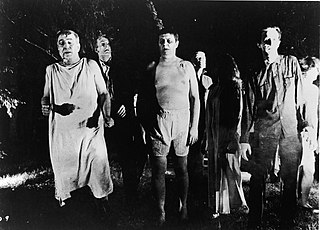
A zombie is a mythological undead corporeal revenant created through the reanimation of a corpse. In modern popular culture, zombies are most commonly found in horror and fantasy genre works. The term comes from Haitian folklore, in which a zombie is a dead body reanimated through various methods, most commonly magical practices in religions like Vodou. Modern media depictions of the reanimation of the dead often do not involve magic but rather science fictional methods such as carriers, fungi, radiation, mental diseases, vectors, pathogens, parasites, scientific accidents, etc.
Küzdelem a létért is a 1918 Hungarian drama film directed by Alfréd Deésy. It is based on French writer Alphonse Daudet's 1889 play La lutte pour la vie. The film was advertised and discussed in Hungarian trade publications as A Leopard.
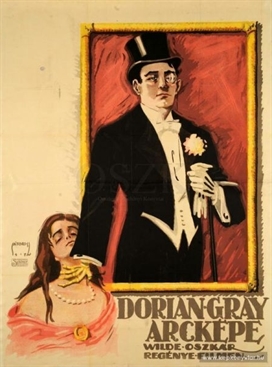
Az élet királya is a 1918 Hungarian film directed by Alfréd Deésy. It is an adaptation of The Picture of Dorian Gray by Oscar Wilde.
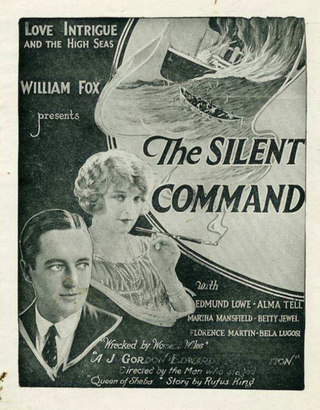
The Silent Command is a 1923 American silent drama film directed by J. Gordon Edwards featuring Bela Lugosi as a foreign saboteur in his American film debut. The film, written by Anthony Paul Kelly and Rufus King, also stars Edmund Lowe, Alma Tell, and Martha Mansfield. The Silent Command began Lugosi's career in the American film industry. The film's focus on his eyes, at times in extreme close-up, helped to establish his image for later roles.

Night of Terror is a 1933 American pre-Code horror film directed by Benjamin Stoloff, and starring Bela Lugosi, Sally Blane, Wallace Ford, and Tully Marshall. Despite receiving top billing, Bela Lugosi has a relatively small part. The film is also known as He Lived to Kill and Terror in the Night.
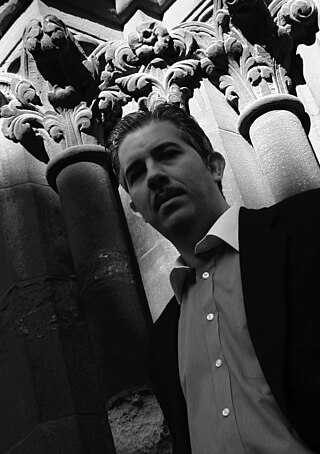
Gary Don Rhodes is an American writer, filmmaker, and film historian. His work encompasses research on early 20th century films and key figures including filmmakers and actors involved in the process. Rhodes is notably recognized for his contribution to classic horror films and his biographical works on Bela Lugosi. In addition to his academic pursuits, he has contributed to the filmmaking domain through the creation of documentaries and mockumentaries. Rhodes holds a tenured faculty position in film studies at Queen's University Belfast.
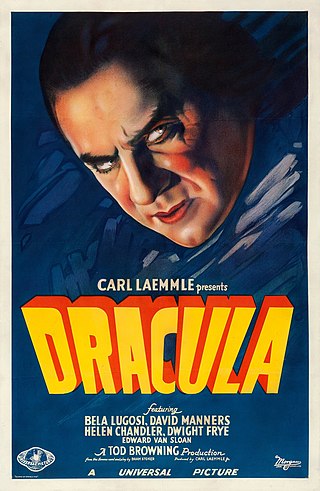
Dracula is a film series of horror films from Universal Pictures based on the 1897 novel Dracula by Bram Stoker and its 1927 play adaptation. The series is a loose collection of films, with historians stating that the films all reference characters, events or at least passing knowledge of the 1931 English-language production of Dracula, with historians noting that Dracula's Daughter and Son of Dracula are more closely related to the 1931 film while the character of Dracula would make smaller appearances in later films such as House of Frankenstein and House of Dracula. After Dracula's Daughter, the character of Dracula and other vampires in the series became more Americanized, starting with the release of Son of Dracula, and the later House of films. The character of Dracula appears in all the films outside of Dracula's Daughter, where he is portrayed by Bela Lugosi, Lon Chaney Jr., and John Carradine in the House of films.

The history of horror films was described by author Siegbert Solomon Prawer as difficult to read as a linear historical path, with the genre changing throughout the decades, based on the state of cinema, audience tastes and contemporary world events.
Voodoo in popular culture encompasses various representations of practices associated with different forms of voodoo, including Haitian Vodou and Louisiana Voodoo, and other elements attributed to African diaspora religions, with such representations often deviating substantially from any actual voodoo practices or beliefs. Tropes regarding voodoo appear most often in supernatural fantasy or horror films, with common themes including the activity of witch doctors, the summoning or control of dark spirits, use of voodoo dolls to inflict pain on people remotely, and the creation of zombies.
















